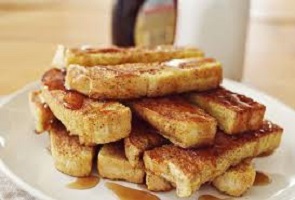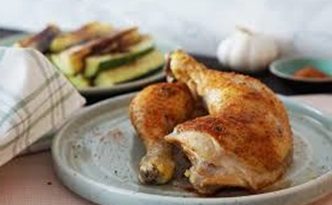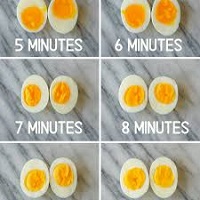Baked French toast – Oven-baked French toast Recipe
Baked French toast – Oven-baked French toast Recipe

A quick and easy way to bake French toast at home! Look no further if you’re seeking a simple, delicious oven-baked French toast recipe! This dish is sure to satisfy.
This quick-baked best French toast casserole has a buttery crisp top and is gently spiced, somewhat sweet, and delightfully soft in the center. This can be made right soon or ahead of time – even overnight!
This cinnamon and vanilla variant of French toast, often known as “eggy bread,” is a morning favorite. Whisked eggs and milk are used to coat slices of white, brown, or raisin bread, which are then baked for around 30 minutes.
To save time, soak the bread ahead of time and store it in the refrigerator until ready to bake.
How to Make French toast in The Oven – Baked French toast
The instructions below will show you how to make French toast in the oven without it burning or undercooking. Enjoy!
French toast Recipe
Here’s a recipe for French toast made in the oven. This is made with plump pieces of bread soaking in a creamy bath of eggs and milk, much like conventional french toast, except it’s baked!
Ingredients:
For the French toast:
- Butter, for greasing
- 1 loaf crusty sourdough or French bread
- 8 whole eggs
- ½ c. heavy cream
- ½ c. sugar
- 2 c. whole milk
- ½ c. brown sugar
- 2 tbsp. vanilla extract
For the Topping:
- 1/2 c. flour
- 1 tsp. cinnamon
- 1/2 c. firmly packed brown sugar
- 1 stick cold butter, cut into pieces
- Freshly grated nutmeg (optional)
- 1/4 tsp. salt
- Warm syrup, for serving
- Butter, for serving
- 1 c. fresh blueberries, for serving
Directions
- For the French toast, firstly, combine the following ingredients. Butter the baking pan and set it aside. Tear the bread into chunks or cubes and put it equally in the pan.
- Meanwhile, in a large mixing basin, crack the eggs. Combine the eggs, milk, cream, granulated sugar, brown sugar, and vanilla in a mixing bowl. Pour over the bread in an equal layer. Cover the pan securely and keep it in the fridge until you’re ready to use it (overnight preferably). You may also make it and then, bake it straight away; either way, it’ll be great!
- Thirdly, to make the icing: In a separate basin, combine the flour, brown sugar, cinnamon, salt, and nutmeg. Using a fork, combine the ingredients. Add the butter and combine with a pastry cutter until the mixture resembles fine pebbles. Refrigerate in an airtight plastic bag.
- After that, preheat the oven to 350 degrees F when you’re ready to prepare the casserole. Remove the dish from the refrigerator and top with the topping.
- For a softer, more bread pudding-like texture, bake for 45 minutes; for a firmer, crispier texture, bake for 1 hour or more. Individual chunks should be scooped out.
- Butter the top, then drizzle with heated pancake syrup and blueberries.
People also ask on Baked French toast:
- Why is my baked French toast soggy?
Too Wet- When there is too much egg mixture in the casserole, it becomes soggy. Our breakfast casserole recipe is on the “drier” side of the breakfast casserole spectrum, which our family prefers. Use stale bread, preferably a thick, substantial bakery bread rather than sandwich loaf slices.
- What is the best way to prepare French toast that isn’t soggy?
To avoid soggy French Toast, lightly toast the bread before soaking it in the custard, and don’t soak it for too long.
- Is it better to have soft or crispy French toast?
On the outside, the ideal French toast is toasted and crispy, with a creamy interior. It’s neither too dry nor too wet. It has a creamy, custard-like flavor (without being very eggy), and it’s frequently sweetened with sugar and topped with maple or fruit syrup, fresh fruit, and butter, although it can also be served savory.
- Why does my French toast have an eggy flavor?
The custard base that gives French toast its soft richness is made up of eggs and milk, but if the proportions are incorrect, you’ll end up with overcooked slices with an unpleasantly flavorful “scrambled eggs” flavor.
- What is the ideal temperature for making French toast?
On a griddle, the recommended temperature for making French toast is roughly 350 degrees Fahrenheit. This is a medium-high setting that allows your French toast to cook through and turn golden brown on the outside without burning.
- When making French toast, what kind of oil do you use?
A neutral oil, such as canola, is best because it won’t alter the flavor of the butter. Choose a medium-low heat setting: With French toast, medium-low heat is the way to go; it won’t burn it, but it’s hot enough to pan-fry it.
- How is French toast supposed to taste?
It reminds me of bread and butter pudding.
It’s custardy on the inside with buttery crispy golden edges, and it’s delicious simply, but it’s perfect for drowning in maple syrup like pancakes!
- Is there anything that goes well with French toast?
Who can say no to bacon first thing in the morning?! …Syrup: There’s a reason syrup is the most preferred French toast topping. … Sausage Links…. Strawberry Yogurt…. Scrambled Eggs…. Fresh Fruit…. Banana…. Peaches.
- Can I make French toast with butter instead of oil?
For preparing French toast, you can substitute butter for canola oil; just be careful not to burn the butter. Reduce the heat a little if the butter starts to smoke.
- In French toast, what may you use instead of vanilla extract?
Maple Syrup as a Vanilla Substitute:
Maple syrup is my go-to vanilla extract substitution
Almond Extract: Almond extract is substantially more intense than vanilla extract, but if used sparingly, it will produce a similar flavor profile
Bourbon, Brandy, or Rum
Other Spices – Instant Coffee or Espresso Powder, Citrus Zest.
- What’s the difference between French toast and eggy bread?
Do you want to know the difference between French Toast and Eggy Bread? French Toast is sweet, while Eggy Bread is savory.
Think bacon or a fried egg for the filler on Eggy Bread, and berries with maple syrup or honey for French Toast. Either way, you’re a winner!


